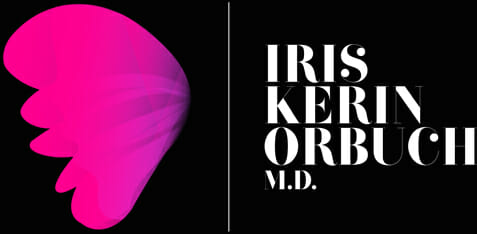Pelvic Pain and Painful Periods | Dr Iris Kerin Orbuch
Symptoms and Treatment
Painful periods are one of the most common symptoms of endometriosis. For some women, painful periods start as a teenager around the time they begin their periods. Many teens find themselves in the nurses’ office month after month due to painful periods resulting in young girls missing a day or two of school each month. For other women, painful periods start later in life and only become apparent for women in their 20’s; while other women develop symptoms in their late 30’s. For some, this can be explained as follows: Many young girls start taking birth control pills in their teens, or during their college years as they became sexually active to prevent pregnancy. While the birth control pill was primarily utilized to prevent pregnancy for these women, the birth control pill secondarily, and unknowingly, may have helped decrease women’s painful periods and pelvic pain. The birth control pill can be utilized as medical management to help women with painful periods with Endometriosis, though it’s important to remember that the definitive treatment for endometriosis is ‘Excision of Endometriosis’. (More to come on Excision of Endometriosis below) Each of these aforementioned scenarios is different, yet each of these scenarios is consistent with endometriosis.
For some women, pain is felt in the left lower abdomen, for others it presents on the right lower abdomen, for some in the midline, for some women in their left upper abdomen and others in the right upper abdomen. Some women experience both left and right-sided pain in both the lower and upper abdomen, yet for others it extends to include back pain. As you can see, women with endometriosis experience their pain in a variety of locations. Though there is a varied presentation of pelvic pain in women with Endometriosis, its important to remember that each scenario still represents Endometriosis.
Woman with endometriosis can have pain at any time of the month. For some women, their pain only occurs during their painful period, others experience pain after her period, for some, pelvic pain occurs before her period, while for others, symptoms occurs midcycle, or can happen any time of the month. All women with endometriosis can present differently in terms of their symptoms.
There are also many other symptoms of endometriosis. Some women with endometriosis have all the following symptoms: constipation, bloating, painful sex, diarrhea, painful bowel movements, urinary frequency, urinary urgency, painful urination, fatigue, malaise, low back pain, pelvic pain and painful periods, while others may only have one of the aforementioned symptoms. Believe it or not there are actually some women who have none of these symptoms and are only diagnosed with endometriosis when they suffer from infertility.
Laparoscopic surgery is the definitive method to diagnose and treat endometriosis, thereby reducing pelvic pain. Excision of Endometriosis is the gold standard treatment for endometriosis. Ideally all endometrial lesions should be excised. Unfortunately most gynecologists are not trained in advanced endometriosis cases. Others approach endometriosis with cautery or a laser or burning, two modalities shown to be far inferior to excision using scissors, the method performed by Dr. Kerin Orbuch. Excision of Endometriosis can reduce pelvic pain. With scissors, the endometrial implants are removed, but with cautery or a laser or the lesion remains and continues to cause pain necessitating more surgery. A doctor utilizing laser may vaporize the surface of the lesion, but still leaves active endometrial tissue below thus allowing symptoms to persist. Deep fibrotic endometriosis usually does not respond well to hormonal suppressive therapy and pelvic pain continues. Adequate surgical excision of endometrial implants provides the best symptomatic relief and long term results to reduce pelvic pain. In addition, surgical excision has been shown to improve fertility rates in women. Drug therapy can suppress endometriosis, not eradicate endometriosis. The definitive treatment of endometriosis is NOT hysterectomy or removal of both ovaries; rather it is complete excision of endometrial lesions.
da Vinci Excision of Endometriosis
Advantages of Robotic Surgery
Robotic Surgery is an advanced form of Minimally Invasive Surgery. Minimally Invasive Surgery, which includes laparoscopic surgery, uses small incisions instead of large incisions to perform surgery thus reducing the damage to human tissue. The da Vinci System is a sophisticated robotic platform designed to expand a surgeons capabilities. With da Vinci, small incisions are used to introduce miniaturized wristed instruments and a high-definition 3D camera. This allows Dr. Kerin Orbuch to view a magnified, high-resolution 3D image of the surgical site allowing for superior visual clarity of anatomy with up to 10x magnification. At the same time, state of the art robotic and computer technology converts Dr. Kerin Orbuchs’ hand movements into precise small movements resulting in extreme dexterity. The robotic ‘wrists’ rotate a full 360 degrees that enable Dr. Kerin Orbuch to control the miniature surgical instruments with unprecedented accuracy with a wide range of motion. These technological advancements allow Dr. Kerin Orbuch to perform complex surgery with precision, dexterity and control. The da Vinci System enables Dr. Kerin Orbuch to perform more precise, advanced techniques and enhances her capability to perform complex minimally invasive surgery thereby reducing pelvic pain.
PHONE: (310) 651-7333 OFFICE: 822 S Robertson Blvd, Suite 300, Los Angeles, CA 90035

